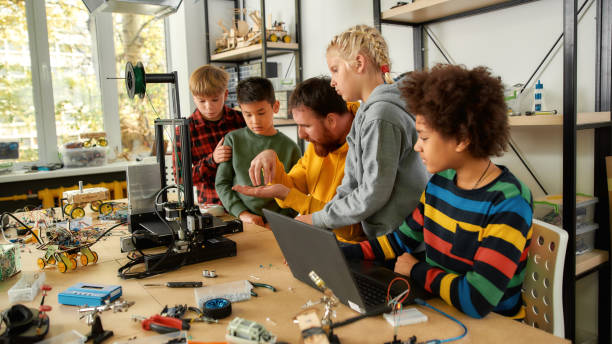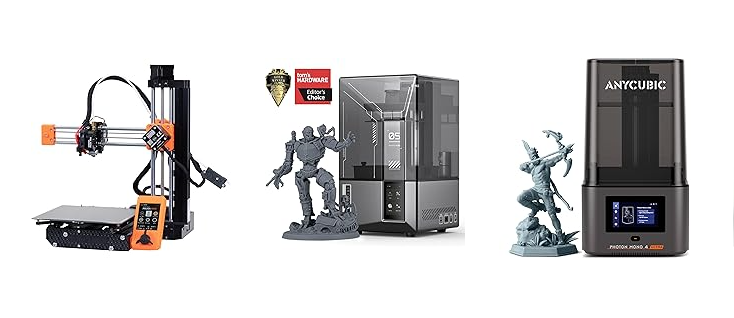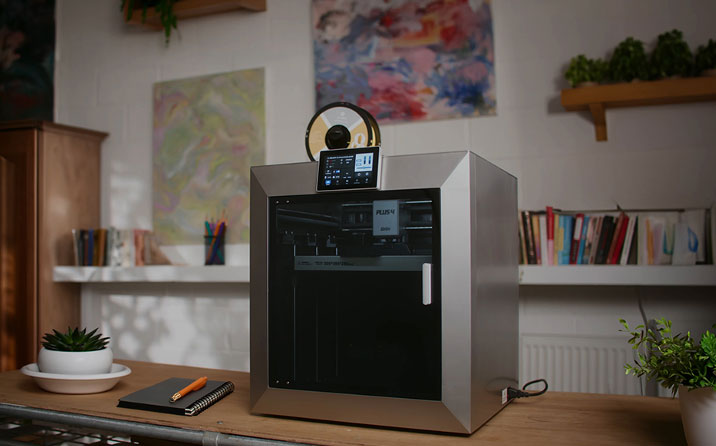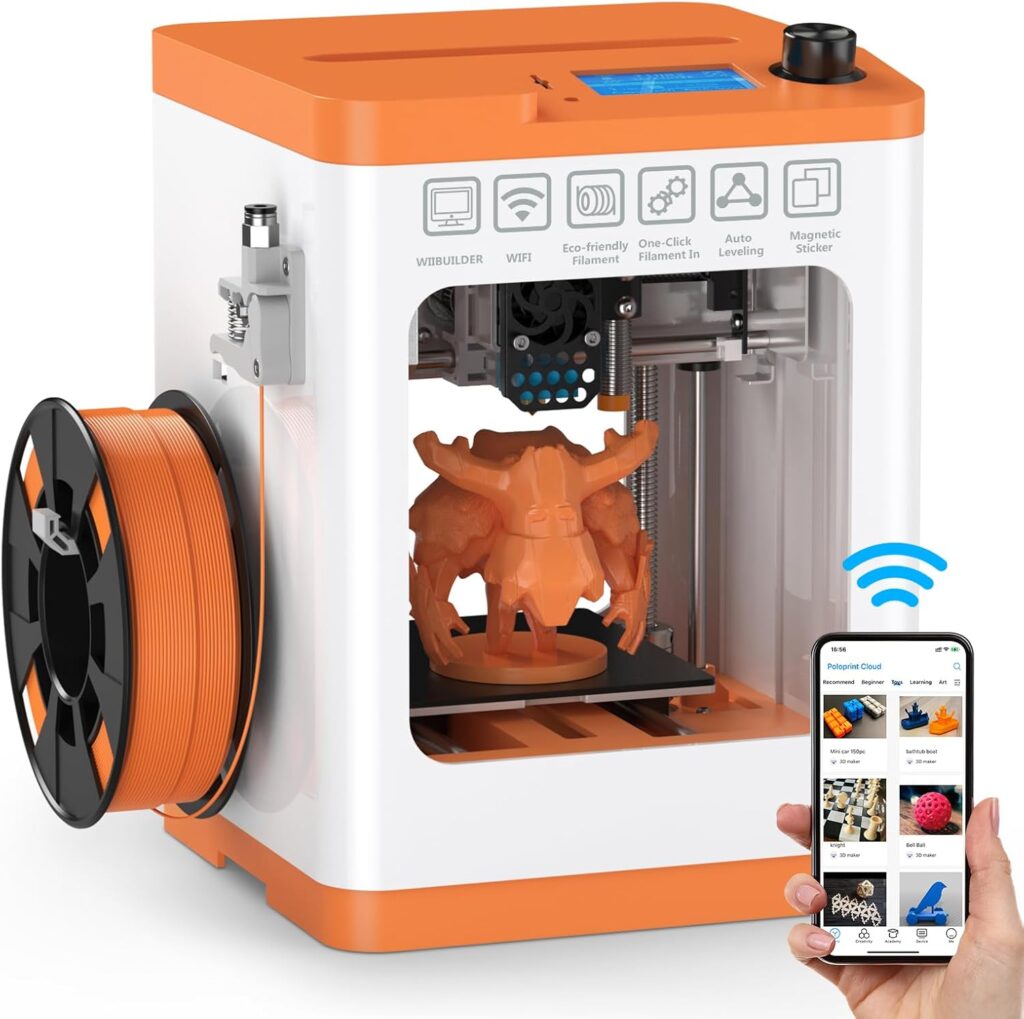3D Printers in STEM: Sparking Innovation, One Print at a Time
3D printing has revolutionized the way we approach education, especially in the fields of Science, Technology, Engineering, and Mathematics (STEM). By bringing abstract concepts to life, 3D printers offer hands-on learning experiences that foster creativity, problem-solving, and innovation among students. If you’re considering integrating 3D printing into your STEM curriculum or personal projects, selecting the right printer is crucial. To assist you, we’ve curated a list of top-rated 3D printers available on Amazon, each boasting high ratings, numerous reviews, and recent purchases.
The Role of 3D Printing in STEM Education
3D printing has transformed traditional STEM education by providing students with a more interactive and engaging learning experience. It allows students to visualize complex concepts, build functional prototypes, and develop problem-solving skills through trial and error. Here are some of the ways 3D printing is making an impact in STEM education:
- Enhanced Creativity and Innovation: Students can design and print models that bring their ideas to life, encouraging creative thinking and experimentation.
- Practical Application of Theoretical Concepts: Abstract STEM concepts become tangible, making it easier for students to grasp subjects such as geometry, physics, and engineering.
- Increased Engagement and Participation: Hands-on learning keeps students more engaged compared to traditional textbook-based learning.
- Encouragement of Critical Thinking and Problem-Solving: Students must troubleshoot and refine their designs, fostering an iterative learning process.
With these benefits in mind, let’s take a closer look at some of the best 3D printers that can bring these educational advantages to your classroom or home.
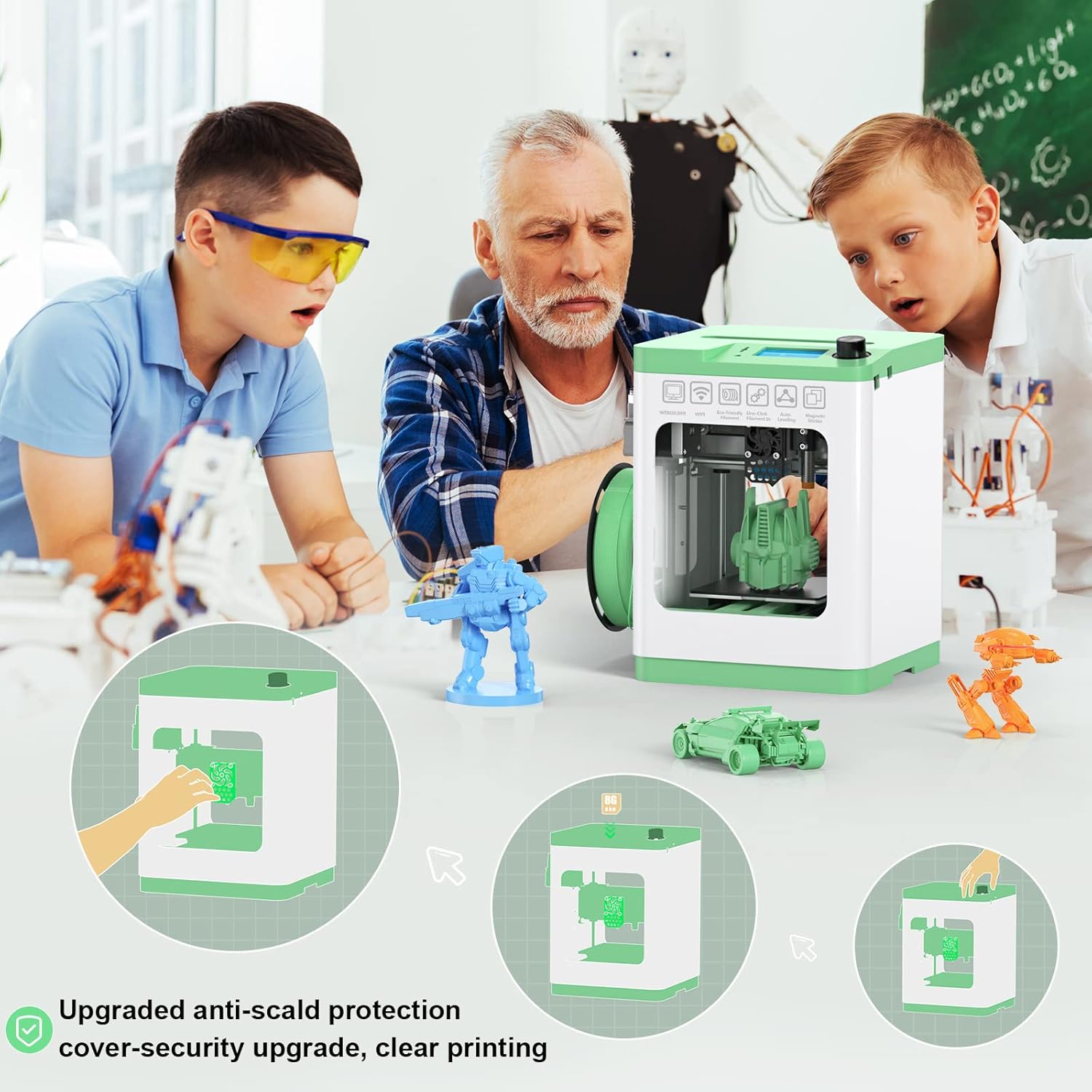
AOSEED 3D Printer for Kids
Designed with young innovators in mind, the AOSEED 3D Printer is perfect for beginners venturing into the world of 3D printing. It comes with an 8-piece PLA filament set and offers a vast toy library, allowing users to create and modify designs effortlessly. With Wi-Fi and app control, this printer ensures a user-friendly experience, making it an excellent choice for educational purposes.

Key Features:
- High precision printing
- Huge toy library with modification options
- Wi-Fi and app control
>>>Explore more about the AOSEED 3D Printer for Kids here<<<
Tina2S 3D Printer with WiFi Cloud Printing
The Tina2S is a fully assembled, mini 3D printer tailored for beginners and kids. It features auto-leveling and high precision printing capabilities. The Wi-Fi cloud printing function allows for seamless operation, making it a convenient tool for both educational and personal projects.

Key Features:
- Fully assembled and ready to use
- Auto-leveling for ease of use
- Wi-Fi cloud printing
>>>Discover more about the Tina2S 3D Printer here on Amazon – Buy Now<<<
Creality Ender 3 V3 SE 3D Printer
For those seeking a balance between performance and affordability, the Creality Ender 3 V3 SE is a standout choice. With a faster printing speed of 250 mm/s, CR Touch auto-leveling, and a Sprite direct extruder, it ensures efficient and high-quality prints. Its robust design and user-friendly features make it suitable for both beginners and seasoned enthusiasts.
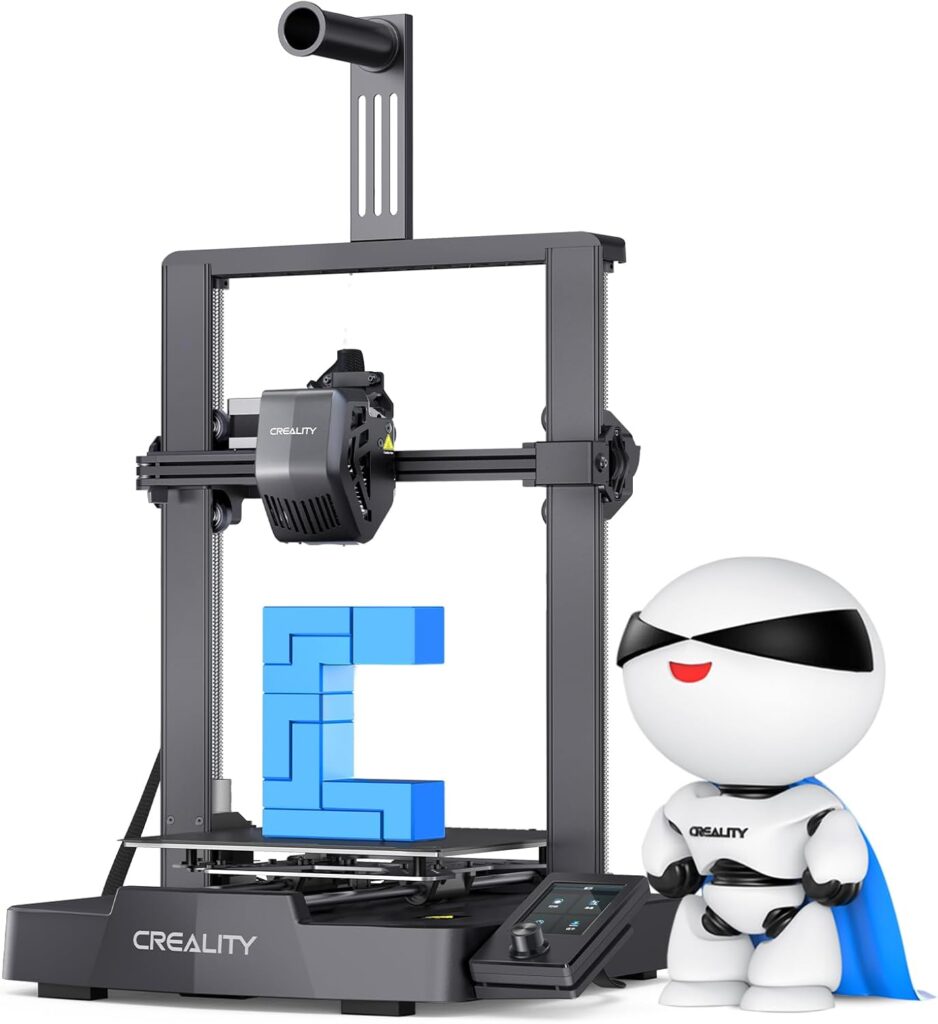
Key Features:
- High-speed printing at 250mm/s
- CR Touch auto-leveling system
- Sprite direct extruder for precise filament control
>>>Learn more about the Creality Ender 3 V3 SE here<<<
FLASHFORGE Adventurer 5M 3D Printer
The FLASHFORGE Adventurer 5M is designed for users seeking high-speed printing without compromising quality. With a maximum speed of 600mm/s, fully auto-leveling, and a 280°C direct extruder, it caters to a wide range of printing needs. Its core XY all-metal structure ensures stability and durability, making it a reliable choice for various projects.
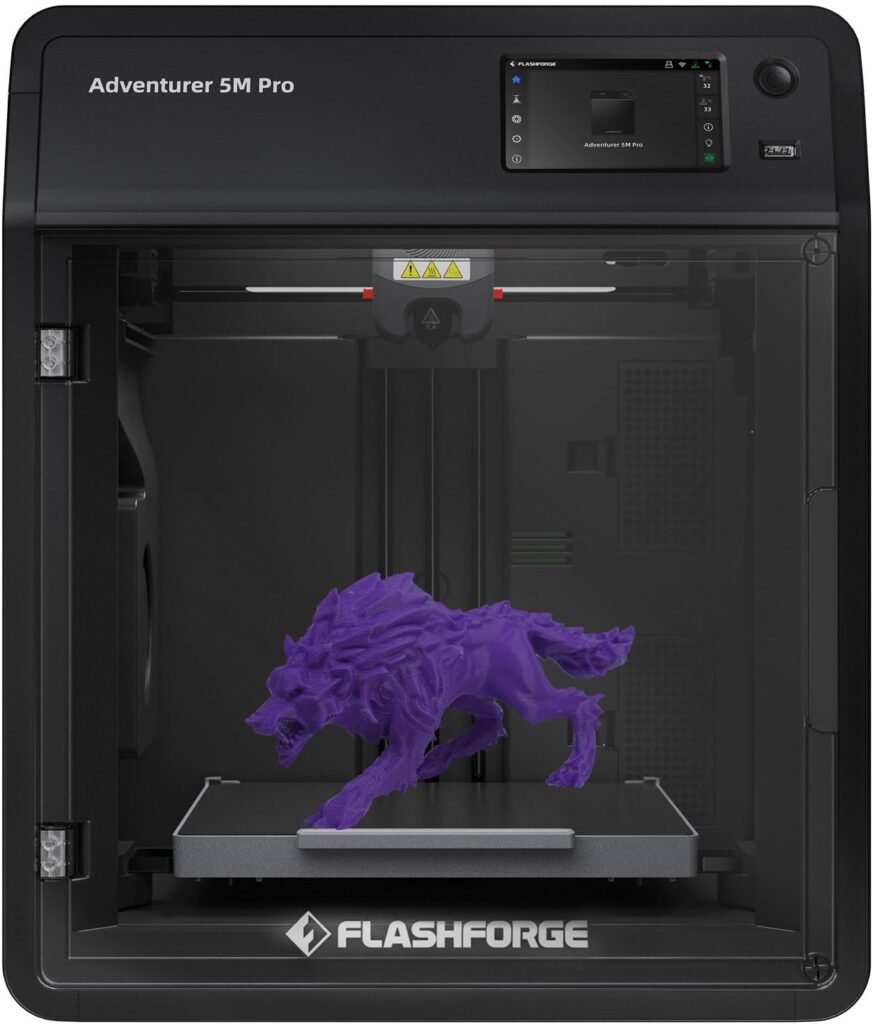
Key Features:
- Ultra-fast printing speed up to 600mm/s
- Fully auto-leveling for hassle-free setup
- High-temperature direct extruder for diverse filament compatibility
>>>Find out more about the FLASHFORGE Adventurer 5M here<<<
Anycubic Kobra 3 Combo Multi-Color 3D Printer
For those interested in multi-color printing, the Anycubic Kobra 3 Combo offers smart multicolor printing with up to 4 colors. With a maximum speed of 600mm/s and intelligent filament drying, it ensures efficient and high-quality prints. Its user-friendly design and advanced features make it a versatile addition to any STEM toolkit.
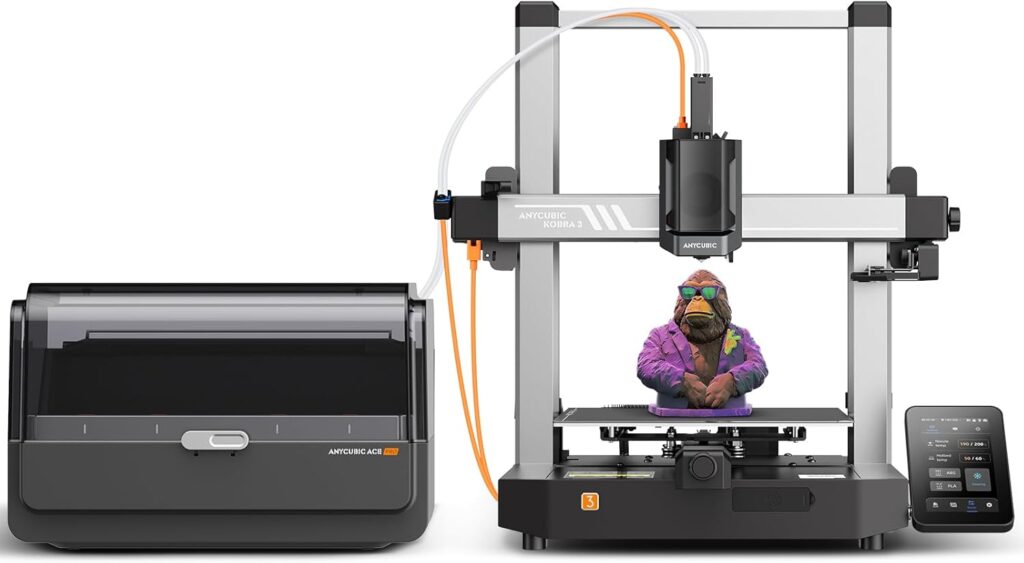
Key Features:
- Smart multicolor printing up to 4 colors
- High-speed printing at 600mm/s
- Intelligent filament drying and nozzle clog detection
>>>Explore the Anycubic Kobra 3 Combo here on Amazon – Buy Now<<<
Conclusion
3D printing is rapidly transforming the way students engage with STEM subjects, providing them with the tools to create, innovate, and solve real-world problems. Whether you’re an educator looking to enhance your classroom experience or a parent seeking to nurture your child’s curiosity, investing in a quality 3D printer can be a game-changer.
The 3D printers listed above cater to different skill levels and needs, ensuring that there’s something for everyone. From beginner-friendly models like the AOSEED 3D Printer and Tina2S to more advanced options like the Creality Ender 3 V3 SE and FLASHFORGE Adventurer 5M, there’s no shortage of options to explore.
By incorporating 3D printing into STEM education, students not only gain technical skills but also develop creativity, resilience, and problem-solving abilities that will serve them well in future careers. If you’re ready to take the next step, check out these highly rated 3D printers and start your journey into the exciting world of 3D printing today!
